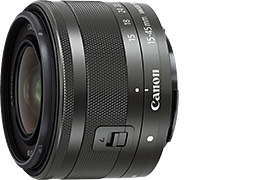Lens FAQ #1: What Does “Closest Focusing Distance” Refer To?
This series is all about answering questions regarding lenses that you thought you knew but didn’t. In this article, we look at one lens specification that you might want to consider when you buy lenses or choose which one to use: The closest focusing distance, also known as the minimum shooting distance. (Reported by: Shirou Hagihara, Digital Camera Magazine)

The closest focusing distance is NOT the same as the working distance!
Many people think that the closest focusing distance and the working distance of a lens are the same thing. They are related concepts, but they are not the same!
The closest focusing distance of a lens (see A below) refers to the shortest distance that must be between your subject and the surface of the image sensor (the focal plane) for the lens to focus. It is not affected by the length of your length, and does not change even if you zoom your lens.
In contrast, the working distance (see B below) refers to the distance between the front end of the lens and the subject.
A lens that has a very short closest focusing distance allows you to achieve sharp, in-focus images with a shorter working distance.
Tip: There are pitfalls to shooting too close
It’s great to have the freedom to be able to shoot close to your subject, but too close and the lens hood and lens shadow might be captured in your shot—not ideal for some shooting scenes! Take the necessary precautions. If your lens doesn't have built-in Macro Lites, consider if you want to invest in a flash that is designed for macro photography.
Know this: Compact cameras may carry specifications such as “1cm macro”. This refers to the working distance of the lens, not the closest focusing distance.

A: Closest focusing distance
B: Working distance
Where is the closest focusing distance measured from?
Canon EOS cameras have a focal plane mark on the camera body. The image sensor is located under this mark. The focusing distance is measured from this mark to the subject. If the lens has a distance scale, the shortest distance indicated on the scale is equivalent to the closest focusing distance.

When does the closest focusing distance matter?
- When you shoot macro
On many macro lenses, you usually have to be at the closest focusing distance to achieve the maximum magnification. But you don’t always want to be too near your subject, especially if you are shooting sensitive creatures such as insects.
Tip: Use a a telephoto macro lens like the EF180mm f/3.5L Macro USM (C.F.D: 0.45m) or the EF100mm f/2.8L Macro IS USM (C.F.D: 0.3m) to achieve life-size magnification even when shooting from some distance away.
- When you are trying to create bokeh
Shooting with the camera closer to the subject results in a shallower depth-of-field, which helps to create a stronger background bokeh effect.
- When you are shooting in a tight space
If the closest focusing distance is big, you will have to stand further away to focus on your subject. Framing and composition aside, this is also why it would be hard to use a telephoto zoom lens like the EF70-200mm f/4L IS II USM (C.F.D: 1.0m) to photograph someone sitting right across the table from you in a small, cozy café.
Closest focusing distances of commonly-used Canon lenses

RF24-105mm f/4L IS USM
Closest focusing distance: 0.45m

RF35mm f/1.8 Macro IS STM
Closest focusing distance: 0.17m

EF50mm f/1.8 STM
Closest focusing distance: 0.35m

EF16-35mm f/4L IS USM
Closest focusing distance: 0.23m

EF70-200mm f/4L IS II USM
Closest focusing distance: 1.0m

EF100mm f/2.8L Macro IS USM
Closest focusing distance: 0.3m

EF-S55-250mm f/4-5.6 IS STM
Closest focusing distance: 0.85m

EF-S18-55mm f/4-5.6 IS STM
Closest focusing distance: 0.25m

EF-M15-45mm f/3.5-6.3 IS STM
Closest focusing distance: 0.25m

EF-M28mm f/3.5 Macro IS STM
Closest focusing distance: 0.093m
Receive the latest update on photography news, tips and tricks.
Be part of the SNAPSHOT Community.
Sign Up Now!About the Author
Born in 1959 in Yamanashi. After graduating from Nihon University, Hagihara was involved in the launch of the photography magazine Fukei Shashin where he worked as an editor and a publisher. He later resigned and became a freelance photographer. Currently, Hagihara is engaged in photography and written works centring on natural landscapes. He is a member of the Society of Scientific Photography (SSP).
A monthly magazine that believes that enjoyment of photography will increase the more one learns about camera functions. It delivers news on the latest cameras and features and regularly introduces various photography techniques.
Published by Impress Corporation











































